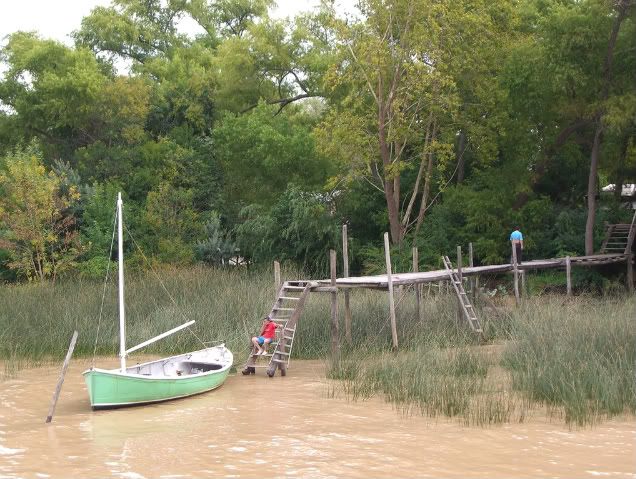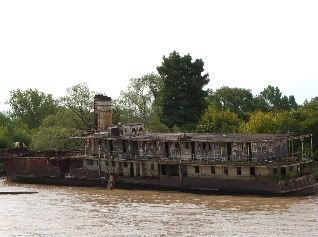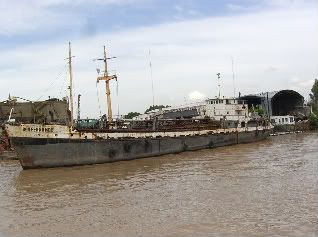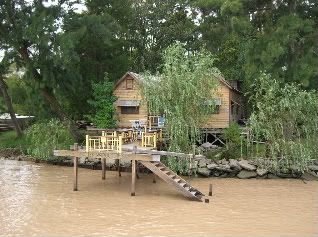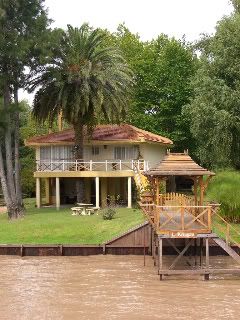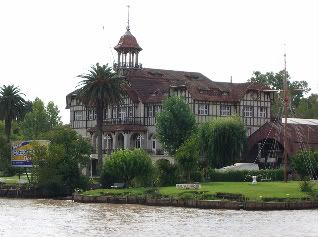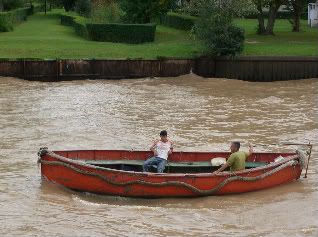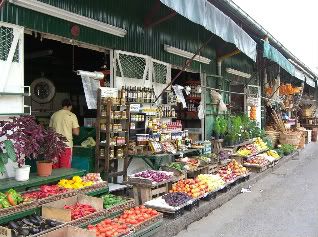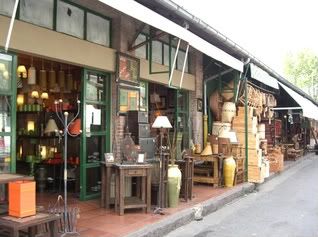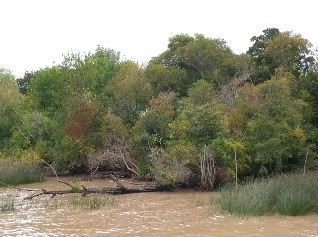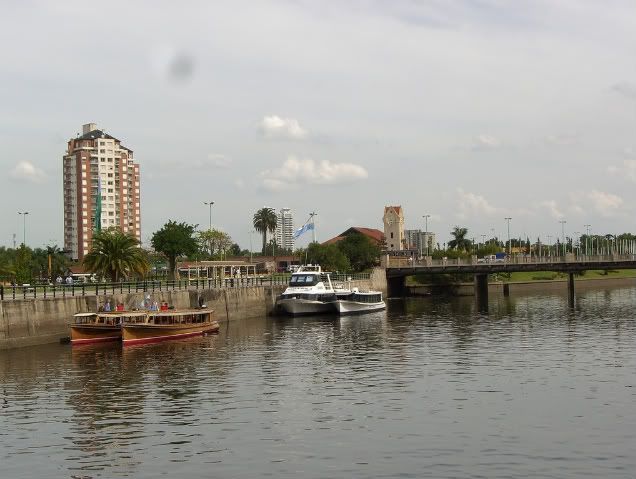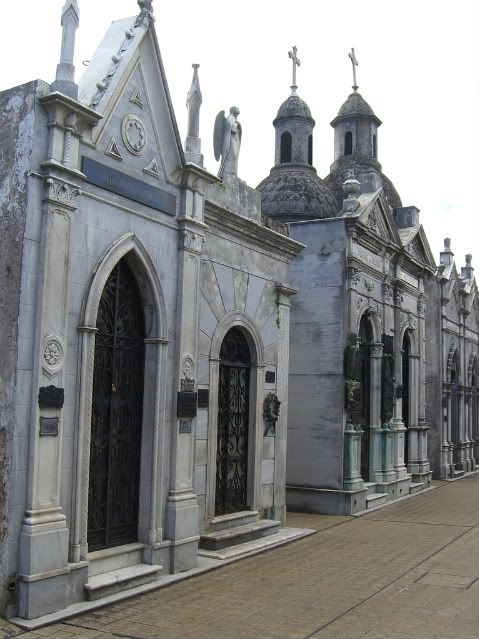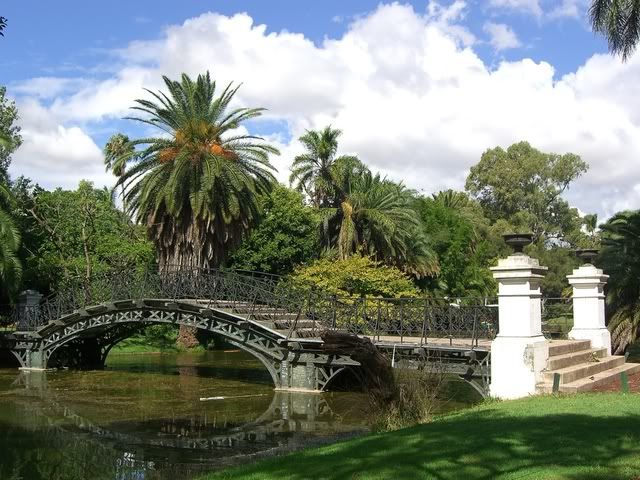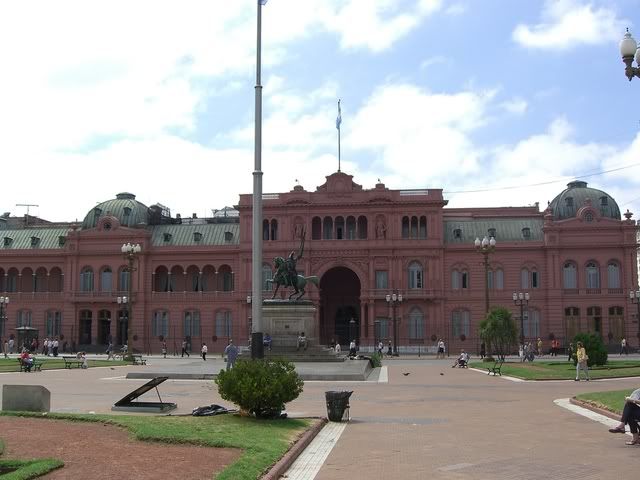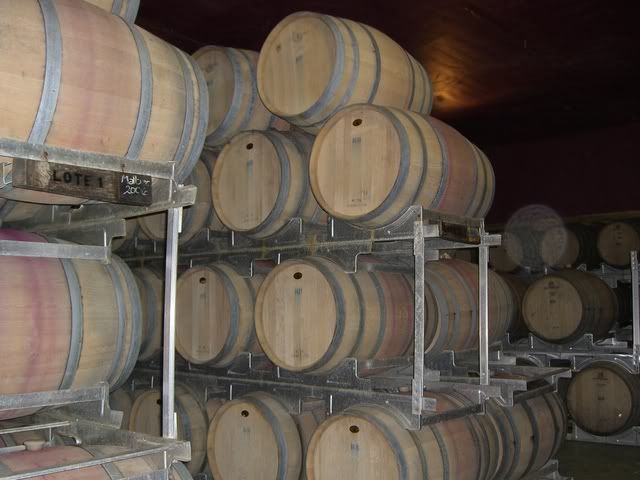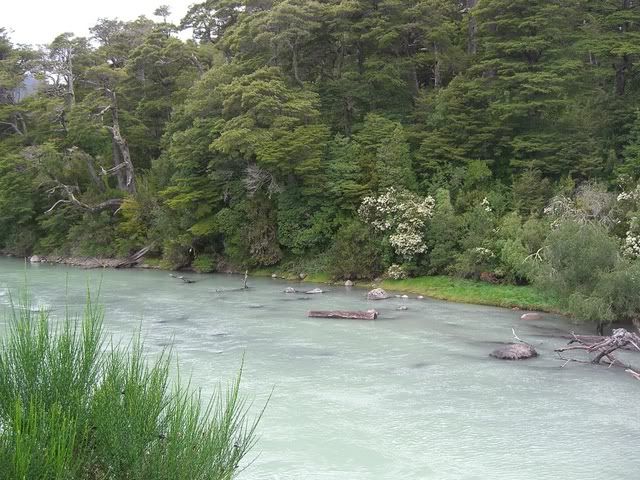Argentina 8 – Poor Niagara!
Saturday, March 29th, 2008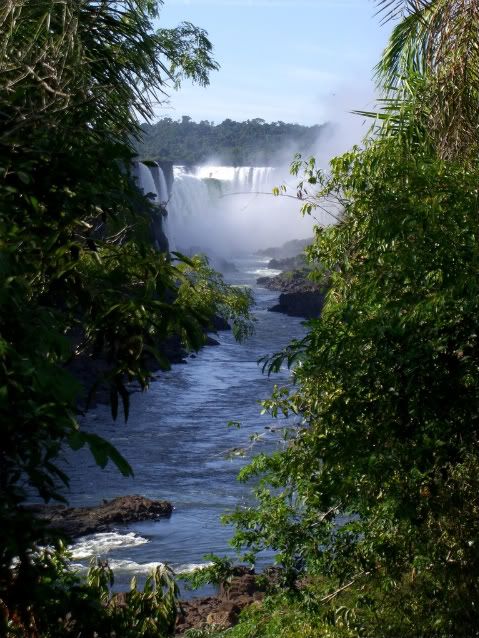
Our first view of the falls…
Those of you who were with me way back at Mile 1755 for Niagara Falls may recall that I was less than impressed. In reality, it wasn’t the falls that disappointed but rather the rampant commercialism that was impossible to escape…especially on the Canadian side. Needless to say I wasn’t really sure what to expect with the famed Iguazu Falls that lie on the border of Argentina and Brazil. Many people throughout South American had told me that the falls were spectacular, though admittantly very touristy. As it turns out…the legions of Iguazu fans were correct in both regards…they were a bit touristy…but totally spectacular.

James on the bus ride to Iguazu
For my last week in South America I was joined by my dear friend James and his friend from university Morag..both from England. James and I met nearly 7 years ago in Spain when we were both studying Spanish and have remained great friends ever since. We decided several months ago that my last weekend would be an opportune time to head to Iguazu Falls and in the meantime we added two other special guest stars…Jesse and Mary from my Spanish courses in Buenos Aires. On Friday night the five of us headed out on one of Argentina’s famed luxury buses for an 18 hour overnight trip to the falls where we planned to spend the weekend.
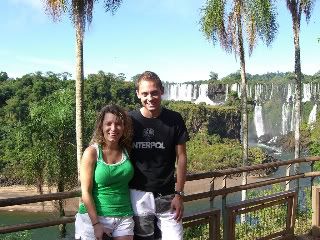
Mary and Jesse

Some of the smaller falls
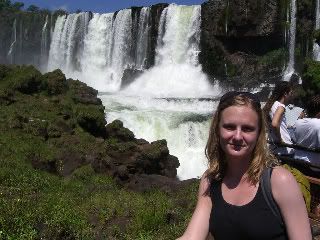
Moi
It is rumored that upon first seeing Iguazu Falls, Eleanor Roosevelt remarked “Poor Niagara!” And indeed she had a point. Vastly larger than North America’s Niagara Falls, Iguazu is rivalled only by Southern Africa’s Victoria Falls which separates Zambia and Zimbabwe (this is excluding extremely large rapid-like falls such as the Boyoma Falls). While Iguazu is wider because it is split into about 270 discrete falls and large islands, Victoria is the largest curtain of water in the world, at over a 1600 m wide and over 100 m (350 ft) in height (in low flow Victoria is split into five by islands; in high flow it can be uninterrupted). The Iguazu waterfall system consists of 275 falls along 2.7 kilometres (1.67 miles) of the Iguazu River. Some of the individual falls are up to 82 metres (269 ft) in height, though the majority are about 64 metres (210 ft). The Garganta del Diablo (Devil’s Throat in English; Garganta do Diabo in Portuguese), a U-shaped 150-metre-wide and 700-metre-long (490 by 2300 feet) cliff, is the most impressive of all, and marks the border between Argentina and Brazil. Two thirds of the falls are within Argentine territory. About 900 metres of the 2.7-kilometre length does not have water flowing over it. The edge of the basalt cap recedes only 3 mm per year.
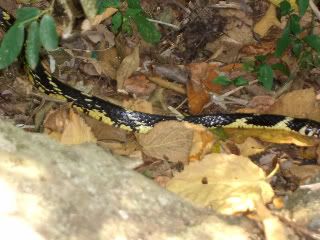
Some fauna (sorry the critter pics are a bit fuzzy)
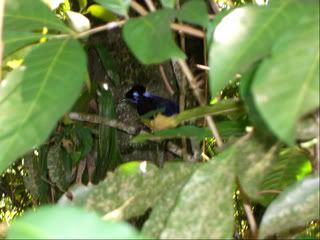
Don’t know the name but these blue and yellow bird are everywhere

Part of the raccoon family
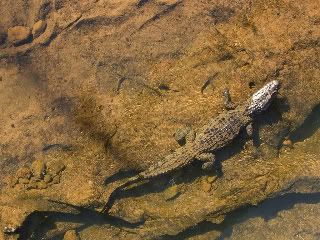
Crocodile…or alligator?
The water falling over Iguazu in peak flow has a surface area of about 40 ha (1.3 million ft²) whilst Victoria in peak flow has a surface area of over 55 ha (1.8 million ft²). By comparison, Niagara has a surface area of under 18.3 ha (600,000 ft²). Victoria’s annual peak flow is also greater than Iguazu’s annual peak—9 100 m³/s versus 6 500—though in times of extreme flood the two have recorded very similar maximum water discharge (well in excess of 12 000 m³/s). Niagara’s annual peak flow is about 2 800 m³/s, although an all-time peak of 6 800 has been recorded. Iguazu and Victoria fluctuate more greatly in their flow rate. Mist rises between 30 and 150 m (100 and 500 ft) from Iguazu’s Garganta do Diabo, and over 300 m (1,000 ft) above Victoria (sometimes over 600 m). Iguazu Falls have been know to dry up completely…most notably when a spectacular party had been planned for the opening of a fancy hotel in the area…no water at all actually crossed over the falls. This is said to be quite rare as it only happens every few decades and usually only lasts a few weeks at most.

From the Brazilian side
Iguazu, however, affords better views and walkways than Vic Falls and its shape allows for spectacular vistas. At one point a person can stand and be surrounded by 260 degrees of waterfalls. The Garganta do Diabo has water pouring into it from three sides. Likewise, because Iguazu is split into many relatively small falls, one can view these a portion at a time. Victoria does not allow this, as it is essentially one waterfall that falls into a canyon and is too immense to appreciate at once (except from the air). Indeed when standing above “Garganta del Diablo” you feel as though you can reach out and touch the massive amount of water flower over the cliff. Unfortunately the below picture does not do it justice as it is simply too vast to get all in one photo…the shots from the Brazilian side offer a better and more impressive close-up view of The Garganta.
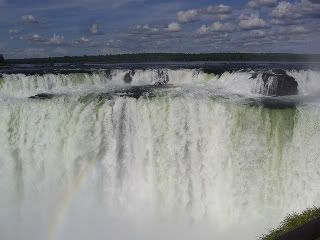
Garganta del Diablo from close-up
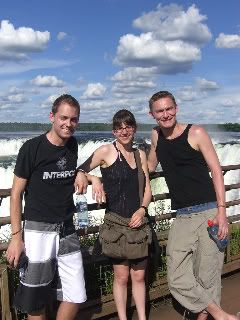
Jesse, Morag and James
While I had heard that the falls were touristy I was actually very impressed with how well-done the park is. The bulk of the falls lie on the Argentina side and since there are so many individual falls in different locations there are lots of walkways and things to do in the park. You can take a boat to one of the islands and wander around the trails complete with spectacular miradores (viewpoints) as well as much flora and fauna. Perhaps the highlight of the day, although only a 10 minute activity, was taking a boat underneath several of the falls and getting completely drenched under the pounding and spray of the water. The Argentinian side is huge and easily has a full day’s worth of activities. Despite the fact that we were there on one of the busiest days of the year (Easter Sunday) the park never felt oppressive as it did in Niagara. My advice though to future goers: do the Lower Circuit first with the boat ride early in the morning to beat the crowds and endless lines.
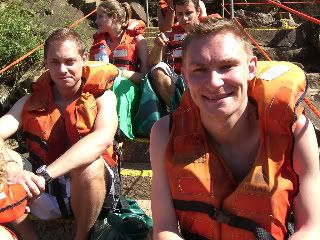
Jesse and James before our dousing under the falls
On Monday James, Morag and I headed to Brazil for a few hours to get a more panoramic view of the falls. Unfortunately for Jesse and Mary they did not have visas for Brazil so were going to find it hard to get in. I had my visa from a few years ago and as citizens of the UK, James and Morag didn’t need a visa. The park on the Brazilian side is also very nice though much smaller and most of the sites can be viewed in the span of a few hours. Perhaps the greatest thing on the Brazilian side is being able to get reasonably close to the Garganta del Diablo and a panoramic view of all of the Argentina side. The pictures in this regard should do it justice.
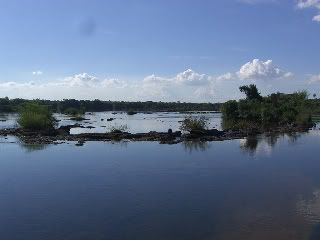
The calm of the water above the falls is deceptive…
And finally, after a 21 hour bus ride, 3 hours in the airport, a 11.5 hour plane ride and 3 hours on the Van Galder I made it home to Cimarron Trail in good form. Indeed there is less snow than I expected but it is cold, cold, cold here compared to 5 days ago when I was in the jungle. Just a reminder to keep the Extravaganza bookmarked until April 11 when I will post my final thoughts on this trip. Have a great weekend everyone!
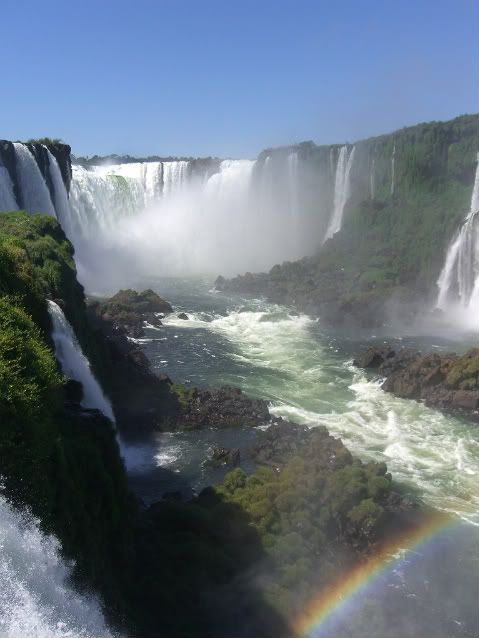
View of the Garganta from Brazil

